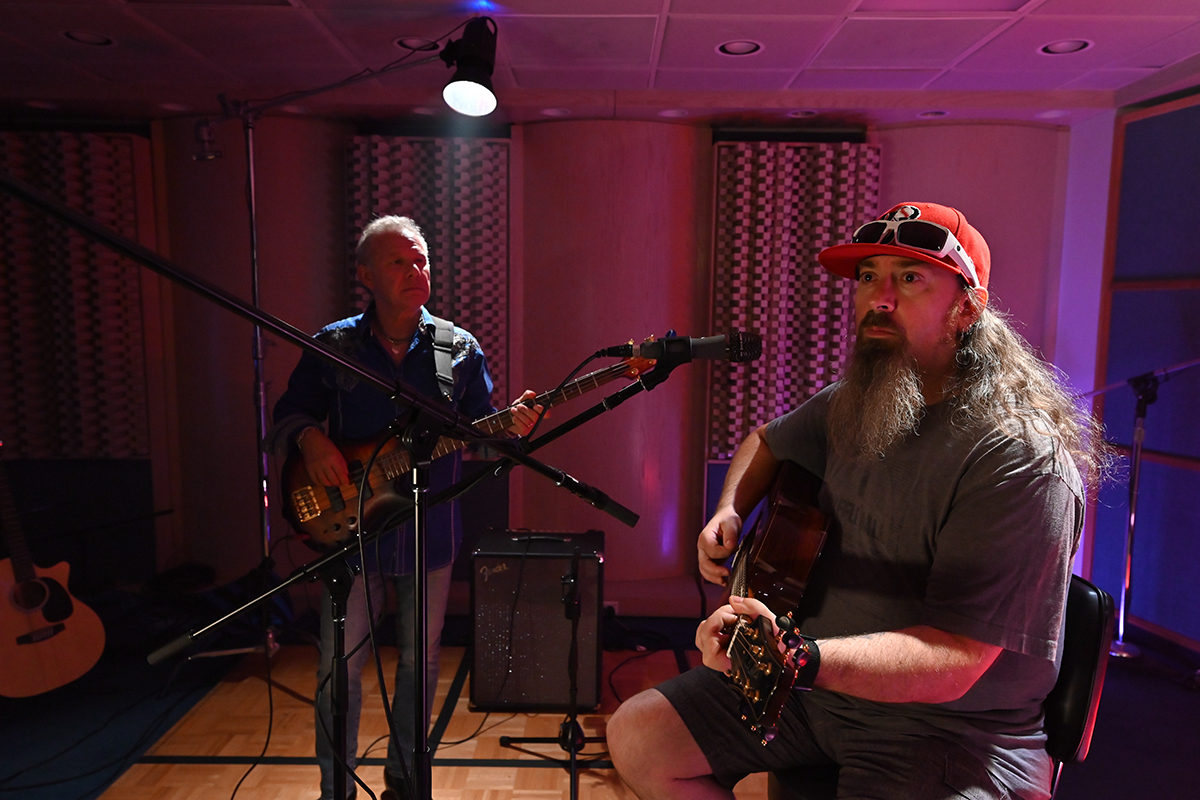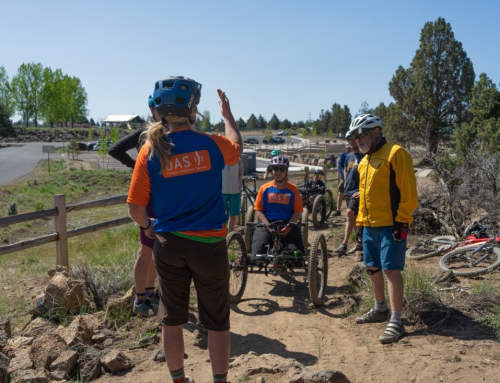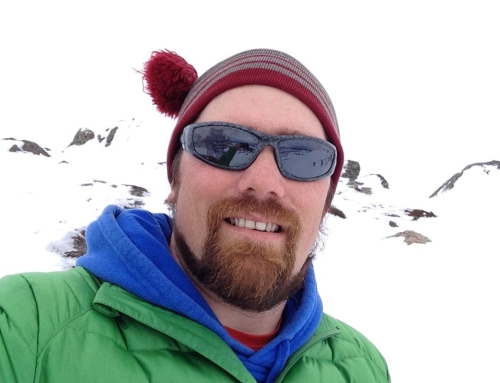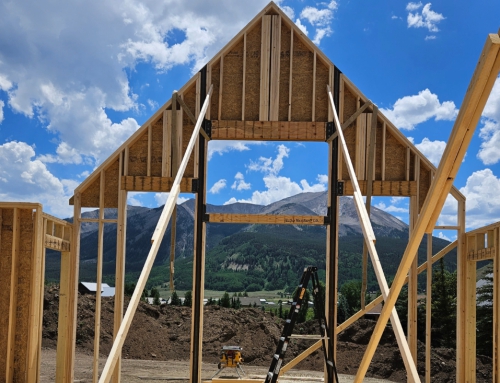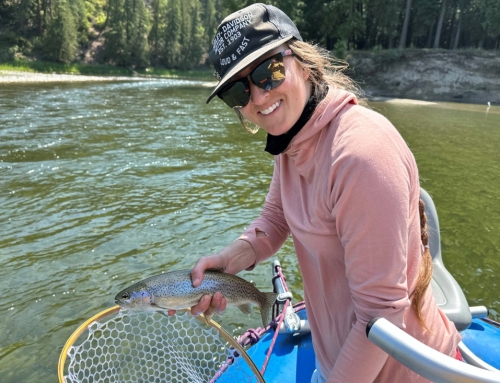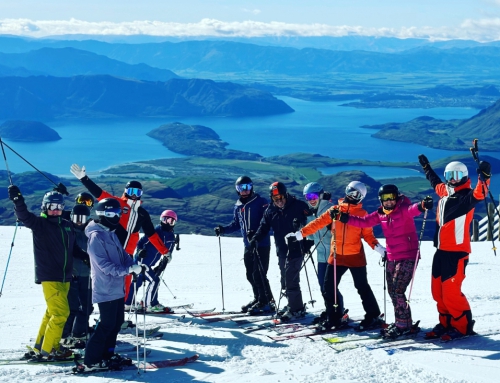32 Degrees: Meet Dave Hirschberg
In this article, that appears in the Winter 2022 issue of 32 Degrees, PSIA-AASI member Dave Hirschberg chats about working as a snowboard instructor AND professional drummer and vocalist.
How did you get into riding and teaching?
The street I grew up on was at the top of hill with a valley below, making my backyard the ultimate sledding hill. Every winter my friends and I would build bobsled courses, jumps, and berms to ride down.
I even built my own snowboard by removing the trucks of my John Lucero skateboard, turning it backwards, screwing a pair of Chuck Taylors to the deck, and using a pair of old suspenders as bindings… so stepping into my first real snowboard in 1985 was mind-altering!
Then, in 1990 I saw an ad for “snowboard instructors wanted” at a local mountain. My intention was to get hired so I could get a pass. Little did I know how much I would love teaching snowboarding. By my third season, I was already the snowboard director and head trainer. By 1995, I had my PSIA Snowboard Level I (AASI hadn’t yet been created) and was working as the assistant ski school director and head alpine snowboard coach.
Why do you like sharing snowboarding with others?
I absolutely love to see the look on kids’ faces when they link turns for the first time. Or the sheer joy of my athletes when they podium.
The first year I taught, I knew I loved it… but I don’t think I could have told you why. Now, after a lifetime of teaching and coaching, I know exactly why. I teach because I love the feeling I get when I help alter someone else’s life. The trainers, directors, examiners, and people I have met along the way have positively impacted my life by altering my path and shaping me into who I am today.
I’ll always remember one moment from early in my teaching career. The father of one of my instructors came up to me and, with tears in his eyes, shook my hand, gave me a bear hug, and said, “Thank you for what you have given my boy.” I was blown away!
Can you share your music history, and how it has evolved?
Both my parents are musicians. My father was a touring musician with some famous acts in the 1960s and ‘70s. He met my mom in Boston while on tour with Screaming Jay Hawkins in the mid-60s. She was a singer in Rhode Island, where she grew up. They created an acoustic duo called Comfort Zone, and are still gigging after all these years.
In the ‘70s, they started their own audio production company, which evolved into an audio/video company by the ‘80s. I started banging on pots and pans when I about six, and as I grew older, my dad’s 1960s silver-sparkle Ludwig drum kit in our basement was calling out to me. My parents finally bought me a kit of my own, and I started practicing by playing along to some of the jazz fusion albums my dad produced.
Then I discovered Iron Maiden, and everything changed. I fell in love with metal music and spent the next 20 years in cover metal bands. Although I never got rich and famous touring the world, I made a career playing all kinds of music professionally on the local circuit, and even recorded parts on some pretty famous songwriters’ albums. Most recently, I recorded some drum tracks for Eddie Brigati from the Rascals, and I did some background vocals for Tommy James on an album he’s recording.
How did you earn your 5 Emmys?
When my parents moved their audio and video production offices into the house, I could go downstairs and make a music video anytime, cut my own stop-motion animated Voltron movies, or even make snowboard movies. I started doing freelance work for my parents, which led to editing work in New York City.
In 2000, I wound up at the New York affiliate for Telemundo and fell in love with video production, editing, and graphic animation. Within two months I was the head editor, and four years later the art director. Over my 15-year career, I was nominated for over 20 Emmy Awards and won five. One of my favorite memories was attending the Emmy Awards in New York City, and hearing our name called. Getting to go on stage and accept the award was pretty cool!
How does music inspire your snowboarding?
Music is rhythm, timing, and movement… and snowboarding is the same thing. If your movement on a snowboard is out of rhythm, you’re not gonna enjoy it very much.
When I ride, I’m always riding to a rhythmical pattern in my head. In super-tight, dynamic skidded turns down steep terrain, I hear blast beats or super-fast thrash metal. In long, laid out carves on beautiful corduroy, it’s The Beatles or fusion. Straight-lining to that 50-foot gap (when I used to do that), I’m thinking Darth Vader’s theme music. Bumps or trees, it’s Elvis all the way! I’ve had people tell me my riding is unique – well it’s because I ride musically. If you haven’t tried using music to drive your movements, please try it.
How do you incorporate music into you lessons?
Music is one of the most important tools I use, especially in race coaching. Pick a song and use the tempo or back beat to change your movements or turn shape. Open your turns on the chorus and close them on the verse. One of my examiners for my Level III exam wrote on my feedback, “I love the way you incorporated Elvis and rock-n-roll into your teaching segment.”
There are plenty of times I’ve started singing and clapping a feel-good tune to get a student out of their funk, put a smile on their face, and get them to start moving. I don’t think I’ve ever seen a person in a bad mood when dancing. To me, snowboarding is the same thing.

